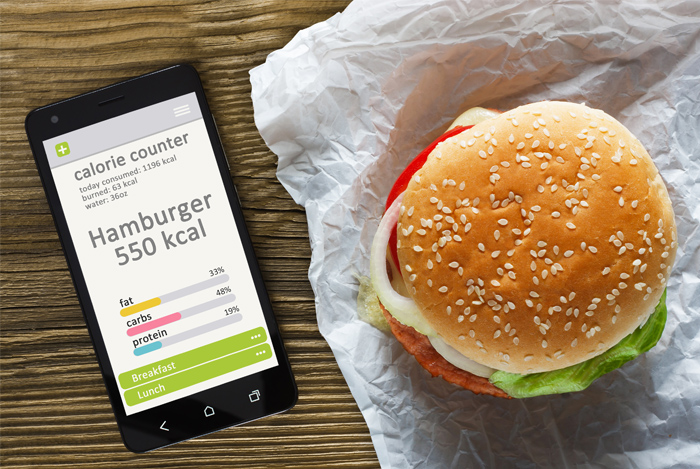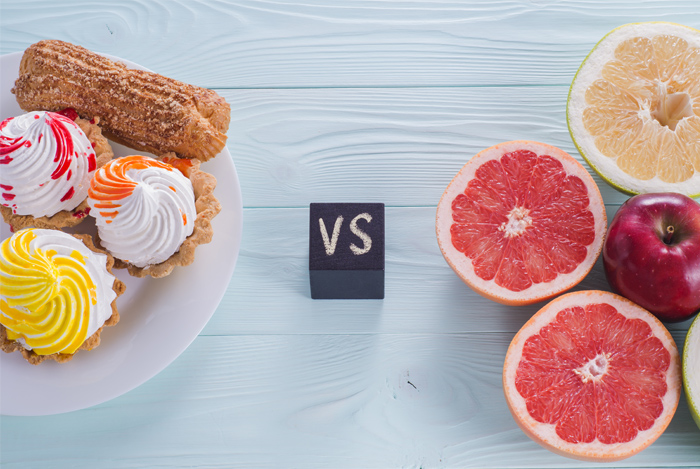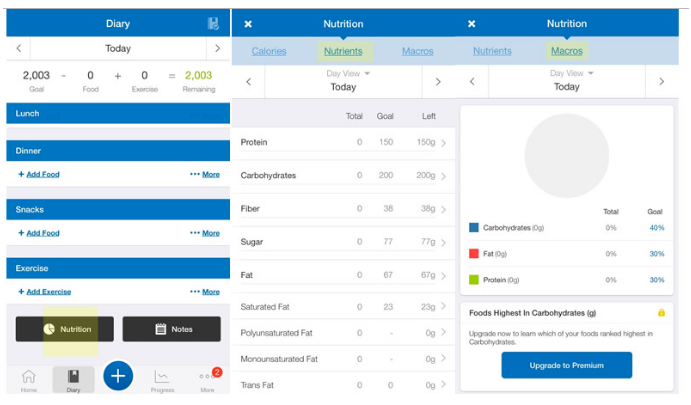What if I told you that you could have your strawberry frosted donut and eat it too and still carve out that set of abs you’ve always wanted?
If you’re a regular reader here, you know this doesn’t sound like something I’d say.
After all, I’m all about eating healthy, whole foods that aren’t processed to death.
But one diet that’s been sweeping Instagram feeds has me intrigued, especially as someone certified in the fitness field. I’m talking about the “If It Fits Your Macros” diet.
Today, we’ll explore why this way of eating has become so popular, understand some of its benefits and drawbacks, and ultimately figure out who it’s best for.
“If It Fits Your Macros”, It’s Fair Game

You may have seen the acronym or hashtag IIFYM on social media and it’s essentially the shorter version of If It Fits Your Macros, a diet focused on macros and flexibility.
But what exactly are we talking about here? What’s a macro anyway?
Protein. Fats. And carbs.
These are the three big nutrients that we all need in the right amount to function properly.
Since we need larger quantities of these guys, they’re called macronutrients. Micronutrients, on the other hand, are nutrients such as vitamins, minerals, and amino acids that we need in smaller quantities.
See, without the right amount of carbs, you’re likely to feel sluggish, sleepy, or even weak.
Eliminate too much fat from your diet and you may find yourself feeling hungrier throughout the day.
A protein deficiency is much more serious. “Decreased muscle mass, diarrhea, low immunity, a protruding belly and fatigue,” are some common issues that come up when protein levels drop far too low.
That’s why diets that stray far in the low carb/low fat/low protein zone usually don’t end up so well.
But with the IIFYM plan, the goal is always aiming for the right amount of macronutrients.
Here’s how it works:
You’ll determine how much of each macro you need to function depending on your fitness and weight loss goals. Then, you’ll try to hit these specific macronutrient levels every day.
Sounds like a fairly simple plan, right?
Here’s where we take a sharp twist: It doesn’t matter how you hit your macro targets.
You could choose to meet your protein requirements by eating a healthy baked chicken breast and broccoli or you could indulge in a Big Mac. As long as it fits your macros, you’re ok.
Now it sounds a bit ridiculous right?
The Twinkie Diet that Helped Shed 27 Pounds

To add to this craziness, Mark Haub, a professor of nutrition at Kansas State, decided to test a similar theory by eating a Twinkie every three hours instead of a nutritious meal. He did this for 10 weeks.
In addition to his Twinkies, he also added Little Debbie snacks, Hostess cakes, Doritos, Oreos, and sugary cereals to his meals. Not what you’d call healthy.
Haub believed that calorie counting—not the nutritional breakdown of a food—was more important to focus on.
As a result of his diet, Haub lost a whopping 27 pounds in just two months. His body mass index went from 28.8 (overweight by BMI standards) to a normal 24.9.
He also saw a 20% drop in his bad cholesterol and a 20% increase in his good, or HDL, levels. His triglycerides also dropped by 39%!
So how could this have happened?
Haub reduced his calories from ~2,600 to a mere 1,800 or less.
Now, with the IIFYM diet, the focus is not on calorie counting; it’s on counting macronutrients instead. But the connection here is that it’s very possible to lose weight eating junk food.
With a flexible diet plan such as IIFYM, junk foods like Twinkies and Doritos are perfectly fine to enjoy if they fall within your macro targets.
Despite how backwards this way of eating sounds, let’s take a look at some of the health benefits it claims to offer.
Health Benefits of the IIFYM
1. It’s Flexible
Dan Bolton of Healthy Eater mentions that flexibility is one of the biggest benefits of this diet plan, which most diets tend to lack.
He points out that, “By focusing on your macronutrient intake rather than eating certain foods you can still achieve your goals while enjoying life with everyone else. You can have your cake and eat it too!”
This is a huge perk, especially for anyone who’s tried (and failed) at sticking to a clean or super restrictive diet.
According to research pointed out by Bolton, flexible dieters experienced less overeating, lower BMIs, and reduced levels of anxiety and depression since they weren’t feeling deprived by their food choices.
So no more passing on that office cake while everyone talks about how great the frosting is, IIFYM-ers.
2. It’s More Sustainable for Some

When you restrict yourself on a diet, you tend to fall prey to unhealthy binge cycles when you fall off the wagon.
Since there are no real off-limits foods, this diet is very sustainable. Dieters aren’t forced to constantly test their willpower by ignoring their cravings. Or buy weird or expensive foods.
IIFYM becomes more like If It Fits Your Lifestyle because it never feels like a diet.
3. It Can Help You Lose Weight While Maintaining Lean Muscle Mass

According to Michael Matthews of Muscle for Life, maintaining a calorie deficit is only the first step to losing weight and maintaining muscle mass.
After that, you also need to make sure you eat enough protein, carbs, and fat to preserve your muscle mass, provide your body with energy for grueling workouts, and synthesize your hormones, respectively.
By counting both macronutrients and calories, you’ll be able to lose weight and transform your body composition without dropping any muscle along the way.
What else should you consider?

Before you head to the store for a box of Twinkies, there are a few things to keep in mind.
First, IIFYM is not a free pass to eat crap.
Yes, you can and should be flexible, but within reason.
If you only stuff your face with junk food, you won’t see any inches come off your waist. This diet may be a recipe for disaster if you’re in the I just can’t stop at one boat.
My biggest issue with the diet is that so many people associate it with eating junk all day and that’s simply not the case.
Truthfully, many IIFYM dieters actually follow a strict 90/10 rule naturally instead of a more lenient 80/20.
This means 90% of their diet is filled with clean macros and the remaining 10% are splurge foods. So most of the diet is in fact healthy even with the option to eat whatever you want.
The flipside to having too much flexibility and freedom is that some dieters will find it too hard to actually figure out what they should be eating, especially if everything is technically fair game.
On top of that, if you add too much junk food to your diet you’re likely to see an increase in your salt intake, which makes your body retain more water.
You’ll see this in the form of swelling in your ankles, legs, and feet. Some people even notice swelling in their fingers and hands from eating too much salt. Not exactly something you want hiding your newly-formed six-pack.
Finally, this diet requires meticulous food logging for it to work properly.
For me, this is not exactly a drawback. I actually recommend this to my clients and for anyone looking to lose weight or improve their overall health.
See, we tend to overestimate how much we’re really eating. This leads many people to fall short of their weight loss goals.
However, with IIFYM, it’s especially important to log your food in a journal or a free app such as MyFitnessPal. It’s the only way you’ll know for sure if you’re truly reaching your macronutrient quotas each day.
So if you’re not a big fan of tracking your food intake, you may want to consider another eating plan altogether.
How to Tell if IIFYM Is Right for You

This diet may not be right for everyone, and that’s okay.
If you’re someone who enjoys the freedom of eating what you want and you can safely control how much junk food you’re mixing in, this diet may be worth a try.
But if this freedom sends you down the path of polishing off an entire bag of potato chips in one sitting, the If It Fits Your Macros plan probably won’t help you achieve your goals.
Aside from all the ab talk, any diet you choose should also keep your health in mind.
Just because Twinkies fit your macros, or any other eating plan, doesn’t mean you should live off of them. Of course, this should go without saying, but it’s a common misconception with flexible eating.
Getting Started with IIFYM
For those interested in the IIFYM plan, here’s how to get started.
First, determine how many macronutrients you need each day. You can use this handy calculator to find this out.
Next, record everything you eat throughout the day using a nutrition tracking app like MyFitnessPal.
As you progress through your day, keep an eye on your macronutrient amounts. MyFitnessPal has a Nutrition button that breaks this down automatically for you:
Image Source: Healthy Eater
From there, just mix and match foods to hit your targets. If you’re maxed out on your carb budget by lunch, cook a dinner that has both fat and protein instead so you don’t go overboard on one macro and still hit each target accordingly.
It’s that simple really.
As with any diet, it’s all about finding what works for your body and your lifestyle. If adding in a bit of junk food is only going to lead you towards a binge, it’s not worth trying.
But if you’re normally a healthy eater and you commit to diligently tracking the few guilty pleasures you weave into your diet, you should be fine to join the IIFYM movement.
I’d love to hear your thoughts! Would you try the If It Fits Your Macros diet?
The post How Flexible Can Your Diet Be While Still Looking Amazing? appeared first on Nutrition Secrets.
http://www.nutritionsecrets.com/how-flexible-can-your-diet-be-while-still-looking-amazing/

No comments:
Post a Comment